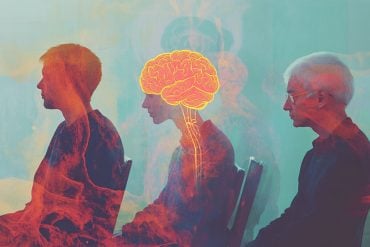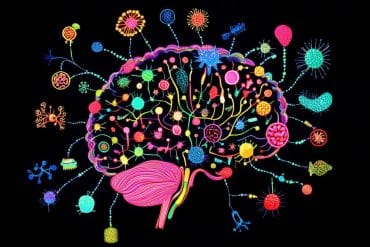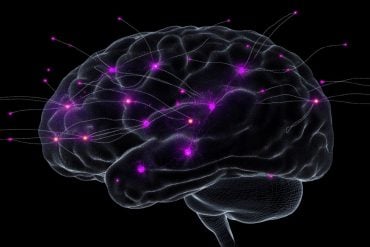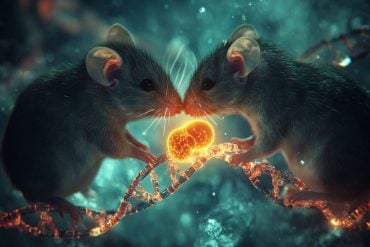Summary: Researchers explore the mechanisms behind ketamine’s effectiveness at treating depression. The study reports the long lasting effects of ketamine may be due to G proteins timing in moving back to lipid rafts.
Source: University of Illinois.
In contrast to most antidepressant medications, which can take several weeks to reduce depressive symptoms, ketamine — a commonly used veterinary anesthetic — can lift a person out of a deep depression within minutes of its administration, and its effects can last several weeks. Researchers have long-wondered how ketamine can both act quickly and be so long-lasting.
Now, researchers led by Mark Rasenick, distinguished professor of physiology and psychiatry in the University of Illinois at Chicago College of Medicine, describe the molecular mechanisms behind ketamine’s ability to squash depression and keep it at bay. They report their findings in the journal Molecular Psychiatry.
Two-thirds of participants in clinical studies who did not respond to traditional antidepressants experienced fast and lasting resolution of their depressive symptoms after being given ketamine intravenously, Rasenick explained. The effects of ketamine typically lasted about a week — much longer than would be expected with ketamine’s six-hour half-life in the body.
Rasenick and his colleagues used a cellular model system to investigate how ketamine acted.
In previous research, Rasenick and his colleagues showed that SSRIs — the most commonly prescribed class of antidepressants, which includes Prozac and Zoloft — work in the brain by moving molecules called G proteins off of “lipid rafts” on the cell membrane, where the G proteins are held inactive. G proteins produce cyclic AMP, which nerve cells need to signal properly. People with depression, Rasenick found, tend to have a greater proportion of their G proteins packed into these membrane patches, along with dampened brain cell signaling, which may contribute to symptoms of depression, including a feeling of overall numbness.
In the earlier research, when Rasenick exposed rat brain cells to SSRIs, the drug accumulated in the lipid rafts, and G proteins moved out of the rafts. The movement was gradual, over the span of several days, which Rasenick thinks is the reason why SSRIs and most other antidepressants can take a long time to begin working.
In his current research, Rasenick and his colleagues performed a similar experiment with ketamine and noticed that the G proteins left the rafts much faster. G proteins began migrating out of the lipid rafts within 15 minutes. And the long-lasting effects of ketamine may be due to the fact that the G proteins were very slow to move back into the lipid rafts, Rasenick explained.
The finding contradicts the long-held idea that ketamine works solely by blocking a cellular receptor called the NMDA receptor, which sits on the surface of nerve cells and helps transmit signals.

In fact, when the researchers knocked out the NMDA receptor, ketamine still had the same effect on the cells — quickly moving G proteins out of lipid rafts on the cell membrane.
“When G proteins move out of the lipid rafts, it allows for better communication among brain cells, which is known to help alleviate some of the symptoms of depression,” Rasenick said. “Whether they are moved out by traditional antidepressants or ketamine, it doesn’t matter, although with ketamine, the G proteins are very slow to move back into the lipid rafts, which would explain the drugs long-term effects on depressive symptoms.”
“This further illustrates that the movement of G proteins out of lipid rafts is a true biomarker of the efficacy of antidepressants, regardless of how they work,” Rasenick explained. “It confirms that our cell model is a useful tool for showing the effect of potential new antidepressant drug candidates on the movement of G proteins and the possible efficacy of these drugs in treating depression.”
Nathan Wray, Jeffrey Schappi, Harinder Singh and Nicholas Senese of the University of Illinois at Chicago are co-authors on the paper.
Funding: This research was supported by VA Merit Award BX00149, and grants R01AT 0009169 and T32 MH067631 from the National Institutes of Health.
Source: Sharon Parmet – University of Illinois
Publisher: Organized by NeuroscienceNews.com.
Image Source: NeuroscienceNews.com image is in the public domain.
Original Research: Abstract for “NMDAR-independent, cAMP-dependent antidepressant actions of ketamine” by Nathan H. Wray, Jeffrey M. Schappi, Harinder Singh, Nicolas B. Senese & Mark M. Rasenick in Molecular Psychiatry. Published June 12 2018.
doi:10.1038/s41380-018-0083-8
[cbtabs][cbtab title=”MLA”]University of Illinois”Ketamine Acts Fast to Treat Depression and Its Effects Last, But How?.” NeuroscienceNews. NeuroscienceNews, 22 June 2018.
<https://neurosciencenews.com/ketamine-lasting-depression-9423/>.[/cbtab][cbtab title=”APA”]University of Illinois(2018, June 22). Ketamine Acts Fast to Treat Depression and Its Effects Last, But How?. NeuroscienceNews. Retrieved June 22, 2018 from https://neurosciencenews.com/ketamine-lasting-depression-9423/[/cbtab][cbtab title=”Chicago”]University of Illinois”Ketamine Acts Fast to Treat Depression and Its Effects Last, But How?.” https://neurosciencenews.com/ketamine-lasting-depression-9423/ (accessed June 22, 2018).[/cbtab][/cbtabs]
Abstract
NMDAR-independent, cAMP-dependent antidepressant actions of ketamine
Ketamine produces rapid and robust antidepressant effects in depressed patients within hours of administration, often when traditional antidepressant compounds have failed to alleviate symptoms. We hypothesized that ketamine would translocate Gαs from lipid rafts to non-raft microdomains, similarly to other antidepressants but with a distinct, abbreviated treatment duration. C6 glioma cells were treated with 10 µM ketamine for 15 min, which translocated Gαs from lipid raft domains to non-raft domains. Other NMDA antagonist did not translocate Gαs from lipid raft to non-raft domains. The ketamine-induced Gαs plasma membrane redistribution allows increased functional coupling of Gαs and adenylyl cyclase to increase intracellular cyclic adenosine monophosphate (cAMP). Moreover, increased intracellular cAMP increased phosphorylation of cAMP response element-binding protein (CREB), which, in turn, increased BDNF expression. The ketamine-induced increase in intracellular cAMP persisted after knocking out the NMDA receptor indicating an NMDA receptor-independent effect. Furthermore, 10 µM of the ketamine metabolite (2R,6R)-hydroxynorketamine (HNK) also induced Gαs redistribution and increased cAMP. These results reveal a novel antidepressant mechanism mediated by acute ketamine treatment that may contribute to ketamine’s powerful antidepressant effect. They also suggest that the translocation of Gαs from lipid rafts is a reliable hallmark of antidepressant action that might be exploited for diagnosis or drug development.






